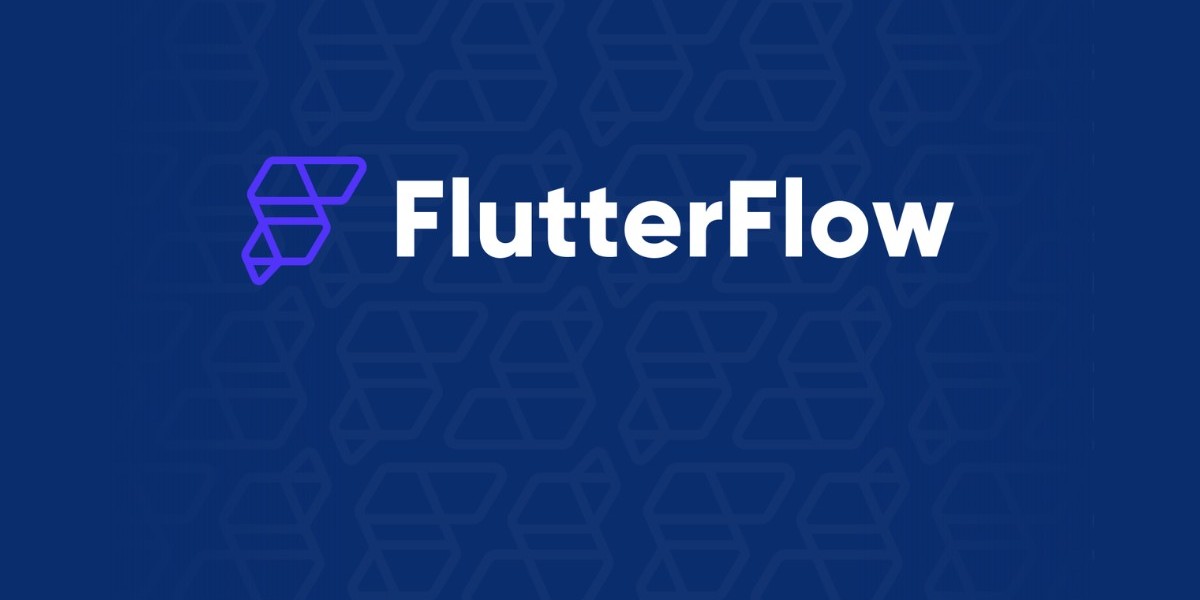A brief overview of FlutterFlow as a low-code app development platform
In the rapidly evolving world of app development, low-code platforms have gained popularity for their ability to streamline the development process. One such platform is FlutterFlow, which allows developers to create cross-platform apps using a visual interface. In this article, we'll take a closer look at FlutterFlow and its features, highlighting its benefits and potential applications.
Overview of FlutterFlow: FlutterFlow is a powerful low-code app development platform that simplifies the process of building beautiful and functional applications. It leverages Google's Flutter framework, a UI toolkit for building natively compiled applications for mobile, web, and desktop platforms. With FlutterFlow, developers can create high-quality apps using a visual interface without writing extensive code.
The platform offers a comprehensive set of tools and features to facilitate app development. Its drag-and-drop editor allows developers to quickly design screens, arrange UI elements, and define navigation flows. FlutterFlow also provides a wide range of pre-built components, such as buttons, forms, and lists, that can be easily customized to suit specific app requirements.
Benefits of FlutterFlow:
Using FlutterFlow offers several advantages for developers, including:
1. Rapid prototyping: With its visual interface, FlutterFlow enables developers to iterate quickly and validate app ideas without spending excessive time on coding.
2. Cross-platform compatibility: FlutterFlow's underlying Flutter framework allows developers to create apps that work seamlessly on multiple platforms, including iOS, Android, web, and desktop.
3. Code generation: FlutterFlow generates clean and maintainable code in Dart, the programming language used by Flutter, reducing the need for manual coding.
4. Collaboration: The platform supports real-time collaboration, allowing multiple team members to work together on app development projects simultaneously.
5. Potential Applications: FlutterFlow can be used to develop a wide range of applications, including mobile apps, web apps, and desktop applications. It is particularly useful for building prototypes, minimum viable products (MVPs), and cross-platform applications where time-to-market and efficient development processes are crucial.
Importance of understanding pricing, reviews, and features before choosing a platform
Selecting the right platform for your business or project is a critical decision. Before making a choice, it is essential to thoroughly understand the pricing, reviews, and features of the available platforms. In this article, we will delve into why it is crucial to consider these factors before committing to a platform.
1. Pricing: Understanding the pricing structure of a platform is vital for making informed decisions. Different platforms offer various pricing models, such as subscription plans, one-time fees, or usage-based pricing. By evaluating your budget and comparing pricing options, you can avoid unexpected costs and ensure the platform aligns with your financial capabilities.
2. Reviews: Reviews from other users provide valuable insights into the platform's performance, reliability, and customer satisfaction. Before committing to a platform, it is crucial to read reviews on trusted platforms, social media, and forums to gain a holistic understanding of the platform's strengths and weaknesses. Pay attention to patterns in feedback and consider the credibility of the sources to make an informed decision.
3. Features: Examining the features offered by a platform is essential to ensure it meets your specific needs. Create a list of must-have features and compare them with the platform's capabilities. Look for features that enhance efficiency, scalability, customization, and integration with other tools or systems. By understanding the available features, you can determine if the platform aligns with your requirements and offers the necessary functionality for your project or business.
FlutterFlow Features
FlutterFlow has emerged as a leading low-code app development platform, empowering developers to build cross-platform applications with ease. Packed with a rich set of features, FlutterFlow streamlines the development process and enables the creation of beautiful and functional apps. In this article, we'll explore some of the key features that make FlutterFlow a standout choice for developers.
1. Drag-and-Drop Editor: At the heart of FlutterFlow lies its intuitive drag-and-drop editor, which allows developers to design app screens effortlessly. With a visual interface, developers can easily arrange UI elements, define layouts, and customize styles. The editor's simplicity and flexibility enable rapid prototyping and iterative design, saving time and effort in the development process.
2. Pre-Built Components: FlutterFlow offers a wide range of pre-built components that serve as building blocks for app development. These components, such as buttons, forms, lists, and navigation menus, can be easily added to the app design and customized to match the desired look and feel. Leveraging these pre-built components eliminates the need to create every UI element from scratch, accelerating development and ensuring consistency across the app.
3. Real-Time Collaboration: Collaboration is made seamless with FlutterFlow's real-time collaboration feature. Multiple team members can work on the same project simultaneously, making it easier to coordinate and iterate on app development. Changes made by one team member are instantly visible to others, fostering efficient teamwork and reducing communication barriers.
4. Code Generation: FlutterFlow generates clean and maintainable code in Dart, the programming language used by Flutter. This feature automates the process of translating visual designs into functional code, reducing the need for extensive manual coding. The generated code can be further customized and extended by developers, offering flexibility while ensuring that the app's codebase remains organized and efficient.
Choosing the Right App Development Platform
Selecting the right app development platform is crucial for the success of your project. With numerous options available, it's essential to carefully evaluate your needs and consider various factors before making a decision. In this article, we'll provide a comprehensive guide to help you choose the right app development platform for your specific requirements.
1. Consider Your Project Requirements: Start by identifying your project's goals, target audience, and desired functionality. Determine if you need a native or cross-platform solution, the level of customization required, and the complexity of the features you want to incorporate. This assessment will help you narrow down the platforms that align with your project's specific needs.
2. Evaluate Development Tools and Features: Review the development tools and features offered by each platform. Consider factors such as the availability of a visual interface, drag-and-drop functionality, code generation capabilities, and the range of pre-built components. Look for features that will enhance your development process, increase productivity, and provide the necessary functionality for your project.
3. Consider Community Support and Documentation: A strong community and comprehensive documentation can significantly impact your development experience. Research the platform's community forums, online support resources, and developer communities to gauge the level of assistance available. An active community can provide valuable insights, troubleshooting guidance, and a supportive environment for learning and growth.
4. Review Pricing and Scalability: Examine the pricing structure of each platform and evaluate its scalability. Consider your budget and the long-term sustainability of the platform. Look for pricing models that align with your financial capabilities, and consider whether the platform can handle the potential growth and expansion of your app.
5. Analyze Performance and Reviews: Lastly, evaluate the platform's performance and reliability. Look for user reviews, ratings, and testimonials to gain insights into the experiences of other developers. Consider factors such as app performance, stability, and the platform's commitment to regular updates and bug fixes.
Conclusion
In conclusion, flutterflow app builder offers a compelling package of features that make it an excellent choice for low-code app development. Its intuitive drag-and-drop editor, extensive library of pre-built components, real-time collaboration, and code generation capabilities simplify the development process. Additionally, considering FlutterFlow's pricing, positive user reviews, and robust feature set, it proves to be a comprehensive and cost-effective solution for building high-quality cross-platform applications.








